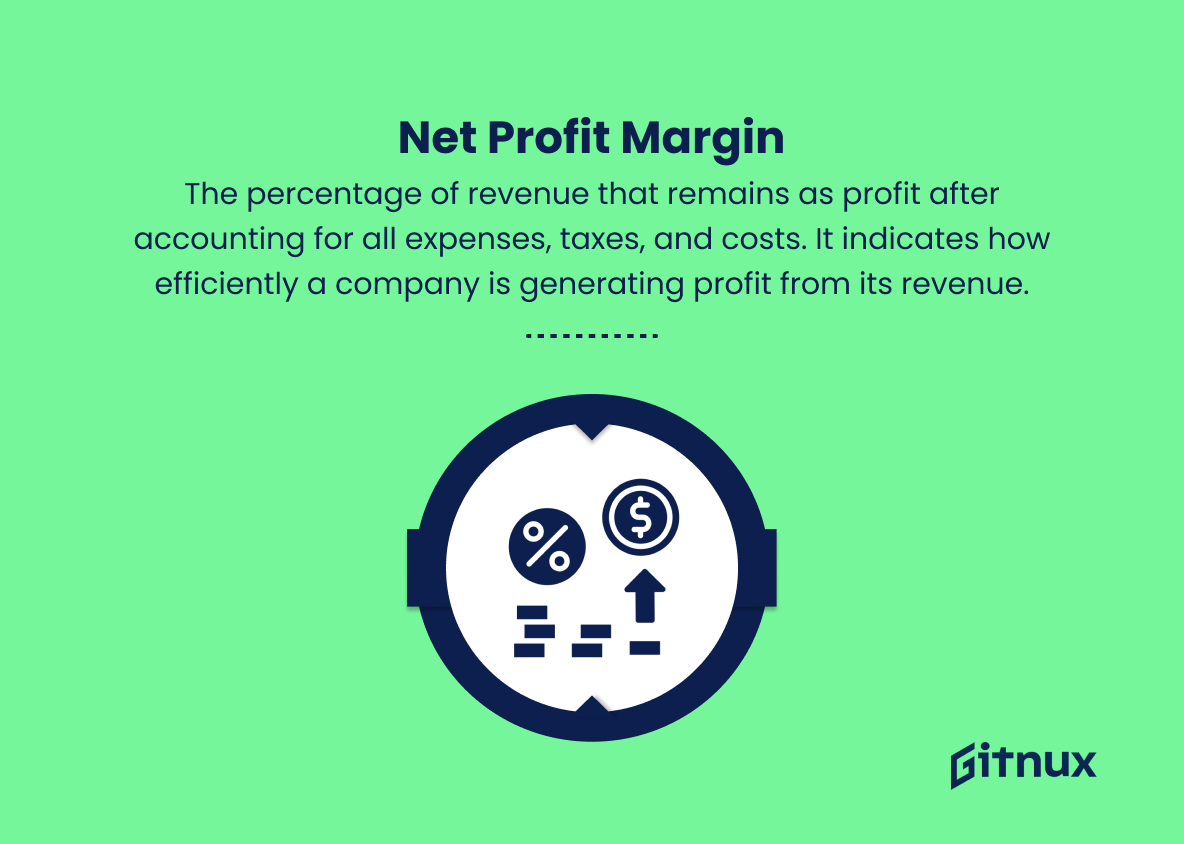In today’s fast-paced and constantly evolving business landscape, it is imperative for organizations to stay ahead of the curve to remain competitive and profitable. One key strategy for ensuring the ongoing success of an enterprise lies in the ability to measure and monitor its business health metrics systematically.
In this insightful blog post, we delve into the importance of understanding these critical indicators and how they play a pivotal role in driving the efficiency, growth, and long-term sustainability of your business. Join us as we unravel the diverse aspects of these metrics, learn how they empower you to make informed decisions, and ultimately, guide your organization toward a more prosperous future.
Business Health Metrics You Should Know
1. Revenue
The total amount of money a business generates through sales of its products or services within a specific period.
2. Net Profit Margin
The percentage of revenue that remains as profit after accounting for all expenses, taxes, and costs. It indicates how efficiently a company is generating profit from its revenue.
3. Gross Profit Margin
The percentage of revenue that remains after accounting for the costs of goods sold (COGS). It measures the profitability of a company’s core business, excluding overhead costs.
4. Operating Margin
The percentage of revenue that remains after accounting for the costs of goods sold and operating expenses. It shows how well a company manages its operational costs and is generating profit from its core business operations.
5. Customer Acquisition Cost (CAC)
The average cost of acquiring a new customer, including marketing, advertising, and sales efforts. It showcases the cost-effectiveness of customer acquisition strategies.
6. Customer Lifetime Value (CLV)
The total projected revenue a business expects to generate from a customer throughout their relationship with the company. It helps businesses understand the value of customer retention and loyalty.
7. Monthly Recurring Revenue (MRR)
The amount of revenue generated by a business each month through recurring revenue streams like subscriptions or long-term contracts. It is essential for companies with recurring revenue models.
8. Churn Rate
The percentage of customers who cancel or don’t renew their subscriptions or contracts within a specific period. A low churn rate indicates high customer satisfaction and strong customer retention.
9. Retention Rate
The percentage of customers a business manages to retain over a specific period. A high retention rate indicates excellent customer loyalty and satisfaction with the products or services offered.
10. Employee Turnover Rate
The percentage of employees who leave the company in a given period. A high turnover rate may indicate poor employee satisfaction and may negatively affect company culture, productivity, and profits.
11. Inventory Turnaround
The amount of time it takes for a business to sell its entire inventory or replenish it. This metric helps to identify inefficiencies in inventory management, procurement, and sales processes.
12. Accounts Receivable Turnover
The ratio that measures how efficiently a company collects payments from its customers. A high turnover rate indicates effective credit management and collection processes.
13. Return on Investment (ROI)
The percentage return on investment made by the company, considering both profits and costs. It helps measure the effectiveness of investments and resource allocation.
14. Return on Assets (ROA)
A profitability ratio that indicates how effectively a company is using its assets to generate profit. A high ROA indicates efficient use of assets and better financial management.
15. Current Ratio
A liquidity ratio that measures a company’s ability to pay its short-term debts and obligations. A current ratio greater than one indicates that a business can meet its financial obligations in the short term.
These are some of the key business health metrics that businesses track to monitor their overall performance and make informed decisions for growth and improvement.
Business Health Metrics Explained
Business health metrics are essential for companies to monitor their overall performance and make informed decisions for growth and improvement. These metrics include revenue, net profit margin, gross profit margin, operating margin, customer acquisition cost, customer lifetime value, monthly recurring revenue, churn rate, retention rate, employee turnover rate, inventory turnaround, accounts receivable turnover, return on investment, return on assets, and current ratio.
Each of these metrics provides valuable insights into various aspects of a company’s operations, such as financial stability, efficiency, customer satisfaction, and employee engagement. By analyzing these metrics, businesses can identify strengths and weaknesses in their operations, implement effective strategies to improve these areas, and ultimately achieve better results in terms of profitability, customer retention, and employee satisfaction.
Conclusion
In the ever-evolving world of business, staying on top of the various health metrics is vital to ensuring continued growth and success. By regularly monitoring these key indicators, organizations can make data-driven decisions, identify areas of improvement, and most importantly, maintain a healthy workforce.
As we have discussed throughout this blog post, comprehensively tracking and analyzing these essential Business Health Metrics will help companies to uncover hidden growth opportunities, safeguard the well-being of employees, and ultimately, remain competitive in today’s rapidly shifting business landscape.















